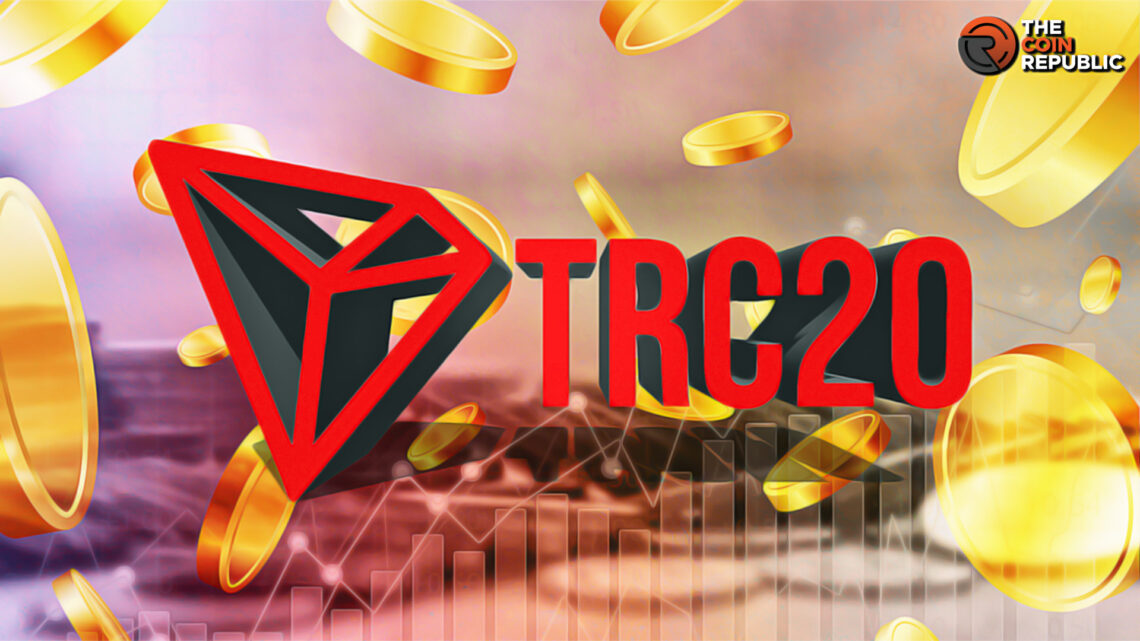- 1 TRC20 is a token standard for circulating Tron tokens on the network.
- 2 Cryptocurrencies like Revain, JUST, and USDT adopt the Tron-based token standard.
- 3 Faster transaction speed and greater efficiency in terms of resource usage are some benefits.
The crypto world holds a wide multiplicity of tokens including ERC20, TRC20, BEP20, TRC10, and many more. Among these, TRC20 is Tether on the Tron network and is believed to be one of the most popular USDT networks. The token is similar to TRC10 and can be exchanged for a similar token.
Let’s delve into the world of the TRC20 token standard.
What is TRC20?
TRC20, a token standard designed by the Tron blockchain in 2018, presents the application of tokens using the Tron Virtual Machine (TVM). The token is employed for the implementation of smart contracts and the production of fungible tokens allocated on the Tron network.
The token is similar to the ERC20 token, and operating over the Tron blockchain makes a difference. Additionally, the token is transferred to other blockchain networks using bridges.
Tron blockchain is a smart contract blockchain and is considered to be one of the biggest rivals of the Ethereum blockchain. The blockchain is well known for its high transaction speed, low transaction fees, and consensus algorithm.
Moreover, the token standard delivers a wide variety of benefits including faster transaction speed and greater efficiency in terms of resource utilization. High liquidity, faster transactions, compatibility with exchanges and wallets, and efficient use of resources make TRC20 a standout performer.
Requirements for Creating TRC20 Token
Writing a contract in Solidity helps in generating the Tron-based token. However, the developer needs to consider a few of the functions for creating the token.
The transaction function helps in moving tokens from one wallet to another whereas the distribution scheme allows the development of multiple copies of the token. Automation and DeFi parameters help in carrying out automatic actions depending on the needs of the platform.
Other Tokens in The List
Apart from the TRC20 tokens, the Tron blockchain is a creator of many other token standards offering similar or different functionalities.
TRC10: this token standard is based on-chain despite the TVM and is issued after paying the fee of 1024 TRX. Additionally, the TRC10 token has 1000 times lower transaction fees when compared to TRC20 but requires bandwidth and energy for API transactions and deposits.
TRC721: the TRC721 token standard is mainly designed to issue non-fungible tokens on the Tron network. The token delivers access to shift items in a virtual way without value compromisation.
TRC1155: this token is much more similar to ERC1155 and is used for managing fungible and non-fungible tokens. The token is also accountable for enhancing network development efficiencies.
Cryptocurrencies Using TRC20 Standard
Several cryptocurrencies in the market use the TRC20 token standard including Revain, Tether, and JUST.
Revain (REV) is a token based on the Ethereum network using the Tron-based token standard. The token has a total supply of 85 Billion and is mainly designed to make the reviews better. Another cryptocurrency in the list is Tether (USDT) which streams on both the Ethereum and Tron networks. It holds a total supply of over 70.1 Billion and allows users to make transactions over different platforms.
JUST (JST) token, on the other hand, uses the TRC20 standard and holds a total supply of 9.9 Billion. JUST is the next generation of Decentralized Finance on the Tron blockchain, allowing individuals to send, spend, save, and earn money at the same time.
Where to Store the TRC20 Tokens
The Tron-based token is supported by both the hot and cold wallets, offering high-level security. A few of the safest options are as follows:
Atomic Wallet: Atomic wallet is compatible with multiple blockchain networks allowing users to store multiple cryptocurrencies simultaneously. Individuals can store, stake, and transact tokens through the Atomic wallet.
Trust Wallet: another option to safely store the tokens is the Trust Wallet which is integrated into multiple blockchains. Interestingly, TRX holders can create a separate wallet on Trust Wallet for storing, investing, and trading tokens.
TronLink: TronLink is another good option to consider as the wallet allows individuals to avail of Tron’s blockchain services while maintaining asset security. The wallet supports both fungible and non-fungible tokens.
Conclusion
The Tron blockchain introduced the TRC20 token standard for the implementation of smart contracts and the production of fungible tokens. Revain, Tether, and Just are a few of the cryptocurrencies that adopt the Tron-based token standard. The respective tokens can be stored in wallets including trust Wallet, TronLink, and Atomic Wallet.
FAQs
Are TRC20 and TRON the same?
The TRC20 standard is used for applying tokens on the smart contract whereas the TRON token is used for a decentralized digital platform.
How much time does a Tron-based token take for a transaction?
The token requires over 3 minutes to accomplish a transaction.
Steve Anderson is an Australian crypto enthusiast. He is a specialist in management and trading for over 5 years. Steve has worked as a crypto trader, he loves learning about decentralisation, understanding the true potential of the blockchain.


 Home
Home News
News







